Game That Has Big Eyes With Blue Eyelids for the Icons
| ||||||
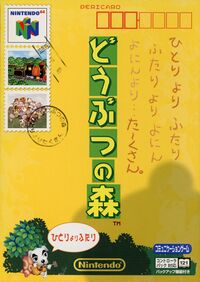 | ||||||
| | ||||||
| Main Theme | ||||||
|---|---|---|---|---|---|---|
| Developer(s) | Nintendo EAD | |||||
| Publisher(s) | Nintendo | |||||
| Designer(s) | Katsuya Eguchi Hisashi Nogami | |||||
| Platform(s) | Nintendo 64 | |||||
| Release date(s) | Nintendo 64 iQue Player | |||||
| Genre(s) | Simulation | |||||
| Modes | Single-player | |||||
| Media | Nintendo 64 Game Pak | |||||
| File size | 103 pages (Controller Pak save data) 62 Blocks (iQue Player) | |||||
| Input methods | Nintendo 64 controller | |||||
Doubutsu no Mori [nb 1] is the first installment in the Animal Crossing series, released exclusively in Japan in 2001 for the Nintendo 64. The game was the last first-party title released on the system before its discontinuation just over a year later. Despite being released late in the console's life cycle, the game sold 213,800 units, making it the 28th best-selling title on the Nintendo 64.[3] An enhanced port called Doubutsu no Mori+ was released eight months later in December 2001 for the Nintendo GameCube, which was later localized outside of Japan as Animal Crossing in 2002.
The game has never been localized for Western regions, as Nintendo of America focused their efforts on Doubutsu no Mori+, which was localized as Animal Crossing in North America. Doubutsu no Mori was released in China for the iQue Player in June 2006. It is the only game in the Animal Crossing series to be officially released in mainland China, and it was the only main series game available in Chinese until the release of Animal Crossing: New Horizons in 2020, which features both traditional and simplified Chinese.
Development and unveiling [edit]
Doubutsu no Mori originally began as an interactive multiplayer role-playing game that focused on cooperation among players to reach common goals.[4] The game was to be developed for the Nintendo 64DD and would take advantage of the system's expanded memory and internal clock. As the market for the 64DD began to wane, the project was ported over to the Nintendo 64. Due to the memory limitations now faced, many aspects of the original game had to be completely redesigned.
The original title featured a "helpless" character who had to enlist the help of animals to make their way through the game. These animals' sleep and wake cycles would be affected by the built-in clock. The designers ended up removing many of the goal-oriented elements from the game including dungeons, bosses, and monsters, leaving only the core aspects of communication and the idea of an environment that operated in real time. Working within the limitations of the Nintendo 64, the team relied on an open-ended and addictive gameplay experience that would keep the player coming back, as opposed to a goal-oriented approach. To accomplish this, the team included a variety of large and small tasks for the player to accomplish, in order to provide a sense of satisfaction for all play styles.
In an interview with IGN on June 5, 2000 about upcoming Nintendo software and hardware, Shigeru Miyamoto announced the development team was working on a "communication game" for the Nintendo 64 but did not elaborate.[5] Doubutsu no Mori was fully unveiled at Space World 2000 in August, with a planned release of month of February 2001[6] [7] and a demo playable on the show floor.[8] The game was later delayed from its planned February 2001 release and its final release date of April 14, 2001 was revealed in March 2001.[9]
Release [edit]

A Controller Pak with one of the labels included with the game applied
Doubutsu no Mori was released in Japan on April 14, 2001, and two versions were sold at launch: one that retailed for 6,800 yen and included a Nintendo 64 Controller Pak along with two unique labels for the accessory, and one retailed for 5,800 yen and did not include the Controller Pak.[10] The included Controller Pak in the bundle features a Grab Bag and a letter from Shigeru Miyamoto, who supervised development of the game.[11] The Grab Bag contains two random Famicom games and a random K.K. Slider song, while the letter can be accessed at the post office. It reads:
- "どうぶつのもり みやもとさん
- カセットそれぞれに じぶんのむら があり、くらしをたのしむゲームが できました。つよいボスとたたかう こともないので、ひとりよりふたり ふたりよりおおぜい!かぞくや、お ともだちと おたのしみください。
- にんてんどう みやもとしげるより"
Which translates to:
- "Animal Forest Miyamoto-san
- Each game cartridge has its own village, where you can enjoy a virtual life. There aren't any strong bosses, or crowds of people. Please enjoy it with your family and friends.
- Yours, Shigeru Miyamoto, Nintendo"
Beginning in early 2002, shortly after the release of Doubutsu no Mori+, Nintendo offered a service for players to transfer save data from the Nintendo 64 game to the GameCube game;[12] however this service has since been discontinued.
On June 1, 2006, Doubutsu no Mori was released in China on the iQue Player as Dòngwù Sēnlín. The game features a full Chinese localization. Dòngwù Sēnlín was the last game release for the iQue Player.
Gameplay [edit]
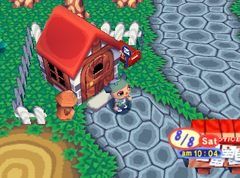
A player standing outside of their house
Players assume the role of a human setting out for a life of their own in a town of anthropomorphic animals. Each town is randomly generated, ensuring that no two players' experiences are exactly the same. Gameplay within each village is open-ended allowing players to engage in a variety of activities that suit their playstyle. Players can pick fruit, grow trees, garden, hunt for fossils and fish, catch insects, do favors for the villagers, or decorate their homes. The game runs in real time, and gameplay is affected by the time of day and year; as the Nintendo 64 lacks a built-in internal clock, time is kept via a chip inside the Game Pak powered by a CR2032 battery, allowing the clock to continue running even when the game is turned off. If the battery dies or is removed, the game will start up with K.K. Slider informing the player that the clock has stopped working, at which point they must configure the date and time manually.
Version differences [edit]
Doubutsu no Mori to Doubutsu no Mori+ [edit]
Characters and locations [edit]
- Various characters and their associated locations and functions are absent from the game, as they are first introduced in Doubutsu no Mori+ on the Nintendo GameCube:
- Tortimer, along with all items he gives out during events.
- The Able Sisters and their shop, meaning custom designs are not available.
- The museum, along with Blathers. Fossils can still be sent to the Farway Museum for identification.
- The dock and Kapp'n.
- Animal Island and all islanders.
- Villagers Punchy and Cheri.
- The house the player begins the game with only contains a Tape Deck. The Orange Box and College Rule are absent.
- The player's house is comprised of only a single room. The second-floor and basement expansions are introduced in Doubutsu no Mori+.
- Tom Nook's store upgrades take 2 days as opposed to 1.
- Several villagers feature different designs than in Doubutsu no Mori+:
- Amelia's pupils are much smaller and centered, and her eyes are half closed instead of scowling.
- Bangle has slightly smaller eyes that are half closed. She also possesses blue eyelids.
- Bluebear's pupils are much larger, and her muzzle is more circular.
- Boris has more compressed eyes with yellow eyelids, while his pupils are more displaced.
- Carmen has black, sparkly eyes, and her pink fur is a darker shade.
- Chevre's eyes are more square shaped instead of rounded, and her freckles are orange instead of pink. Her hair is also different.
- Cleo has orange blush under her eyes, which are more narrowly spaced. Her nostrils are also much larger.
- Cupcake's hair and eyeshadow colors are inverted. Her hair is a blueish purple, and her eyeshadow is dark pink. Her nose is also much larger.
- Fang's fur is slightly lighter, while his eyes are much larger and positioned further upward. He also has brown eyelids as opposed to purple.
- Friga has a darker pink tone in her feathers, smaller eyes, orange makeup, and purple hair.
- Gwen's eyeshadow is purple instead of pink, while her eyes are larger and wider.
- Huggy's fur is orange instead of tan, while her nose is a much darker brown. Her cheeks are also colored pink instead of red.
- Kody's eyes are further spaced and much smaller, and his mouth is larger.
- Lucy has a larger mouth that is colored pink, and has pink lines under her eyes in place of blush.
- Maple's muzzle is a darker color, while her eyes are more displaced from each other. She also has curved eyebrows, a larger nose, and more solid blush.
- Murphy's eyes and eyebrows are more curved, and his mouth is more compressed, giving him a more menacing look.
- Nibbles has green fur instead of teal, and has blush instead of freckles.
- Portia's eyes are shorter and positioned lower on her face.
- Puck's pink feathers are a darker shade, and his eyes are slightly wider.
- Scoot's green feathers are a lighter shade, and his eyes are slightly larger.
- Spike has slightly lighter skin, smaller eyes and pupils, and his scar does not have stitches.
- Static's eyes are larger, and his pupils are much larger. His frown is also much more curved.
- Stella has hot pink wool instead of purple, a pink face with orange blush, and a black nose. Her mouth is also frowning instead of smiling.
- Tiara's skin is much darker, while her pupils point upwards.
- Ursala has red hair with curved eyebrows, half-circled eyes, and a large smile. Her muzzle is large and colored pink, and her eyes are almond-shaped.
- Valise has lighter, purplish fur, and her expressions are different.
- Vladimir has smaller pupils and lacks a muzzle. His nose and mouth are also much bigger.
- Yuka's mouth is larger, her fur is a darker shade, and her hair is styled differently.
Events [edit]
- Wendell will only accept fish, instead of any edible item.
- Gulliver gives the player random furniture as a reward for rescuing him instead of unique world-themed furniture, all of which is absent.
- The player is not able to participate in the morning aerobics.
Items [edit]
- Two shirts are unique to Doubutsu no Mori, having been redesigned in later releases:
- I Love 64 Shirt (redesigned as I Love GC Shirt in Doubutsu no Mori+ and Cherry Shirt in Animal Crossing — Worn by Paolo)
- N Logo Shirt (redesigned as G Logo Shirt in Doubutsu no Mori+ and Animal Crossing — Worn by Cube)
- Two paintings are exclusive to the N64 game: the Dreadful Painting and the Novel Painting, which are not obtainable in the normal course of play in later versions, likely due to the source artworks still being under copyright at the time.[nb 2] These items also exist in the code of the Japanese release of Animal Crossing and can be brought over from an N64 save file via Nintendo's now-discontinued Data Moving Service, but cannot be added to the catalog in the GameCube game. In the international release of Animal Crossing and in Doubutsu no Mori e+, the items are removed entirely, with their index numbers instead pointing to duplicates of the DUMMY placeholder furniture.
- There are seven Famicom game items, compared to the 17 in Animal Crossing: Balloon Fight, Clu Clu Land, DK Jr MATH, Donkey Kong, Golf, Pinball, and Tennis. All items are simply named "Famicom" and can only be distinguished by the color of the cartridges inserted into the system. Animal Crossing introduces twelve more Famicom titles.
- All event items given by Tortimer are absent, since the events and Tortimer are absent as well.
- Golden tools are absent, and the standard Axe is unbreakable.
- The "Items" section of the catalog only includes umbrellas, as tools do not appear in the catalog and other handheld items, such as fans or pinwheels, are not in the game.
- Some non-furniture items, such as tools, appear as sprites inside Tom Nook's store and the player's house. In all later games, they appear as 3D models when placed in interiors.
Bugs and fish [edit]
- When releasing a fish, it will bounce once on the ground before diving into the water. In all later games, the fish dives directly into the water.
- Insects can roam between acres, but not out to sea. This is reversed in Doubutsu no Mori+ and Animal Crossing.
- The Sea Bass, Red Snapper, Barred Knifejaw, Jellyfish, Arapaima, Crawfish, Frog, and Killifish are all absent, being introduced in Doubutsu no Mori+.
- The Pill Bug, Mole Cricket, Mosquito, Pondskater, Ant, Bagworm, Spider, and Snail are all absent, being introduced in Doubutsu no Mori+.
Limitations [edit]
- Only one item can be kept in a storage unit as opposed to three.
- Only one aircheck can be stored in a music player as opposed to all of them.
- Only a single unit of stationery can be purchased at a time, whereas in all later games stationery is sold in packs of four.
- The player can only hold a maximum of 50,000 Bells rather than 99,999.
- Only one item can be selected when selling at Tom Nook's store.
Miscellaneous [edit]
- Most items dropped on the ground outside appear as either tool or chest sprites instead of the unique category-based sprites of later games.
- Visiting other towns requires one Controller Pak to save travel data on, which can then be loaded on the destination town. Two Controller Paks can be used to travel directly. A similar system is used in Doubutsu no Mori+ but utilizes Nintendo GameCube Memory Cards instead.
- As Doubutsu no Mori predates the release of the e-Reader, there is no support for it and all e-Reader functions are absent.
Doubutsu no Mori to Dòngwù Sēnlín [edit]
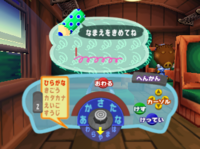

The Nintendo 64 (left) and iQue Player (right) typing interfaces.
Aside from the language change from Japanese to Simplified Chinese, various localization changes were made to the iQue Player version of Doubutsu no Mori, Dòngwù Sēnlín.
General [edit]
- The Nintendo 64 logo animation played when booting up the game is replaced with the iQue Player logo.
- The copyright text on the title screen now reads "©2001-2006 Nintendo" to reflect the game's release date in China, and text reading "©2006 iQue" was added below it.
- The English "Press Start Button!" text on the title screen in the Japanese version is now partially in Chinese, reading "按START钮!".
- The typing interface is changed from the dial interface to a QWERTY keyboard, similar to the international versions of Animal Crossing.
- All town names have 村 (village) appended to them.
- The sprite and icon for the Grab Bag are changed.
- The English "POST OFFICE" text on the entrance of the post office is now in Chinese, reading 邮政局 (post office).
- Instances of the Japanese postal mark, 〒, have been replaced with a letter symbol.
- The sign on the side of Nook's Cranny is now red with a black circle and text instead of white with a red circle and text.
- The appearance of the shrine is different, now featuring different textures and missing the wooden extrusions from the roof and the bells from the front.
Items [edit]
- The following items replaced some items from the Japanese version.
-

School Desk
-

Graffiti Desk
-

Desk with Books
-

Yellow Sand Pile
-

Massage Bed
-

Bedside Cabinet
-

Heater
-

Wooden Slippers
-

Stone Table
-

Stone Stool
-

Incense Burner
-

Terracotta Armored Warrior
-

Copper Armored Warrior
-

Terracotta Kneeling Shooting Figure
-

Copper Kneeling Shooting Figure
-

Terracotta General Figure
-

Copper General Figure
-

Headless Terracotta Figure
-

White Makeup Egg
-

Red Makeup Egg
-

Blue Makeup Egg
-

iQue
-

Terracotta Piggy Bank
-

Wine Jar
-

Large Water Jar
-

Brazier
-

Wooden Toilet
-

Left Guardian Lion
-

Right Guardian Lion
-

Large Bonsai
-

New Year's Goods
-

Flour-Man Shelf
-

Guan Yu Statue
-

Corner Flag
-

Soccer Goal
-

Electronic Scoreboard
-

Telephoto Camera
-

Billboard
-

Substitution Card
-

Audience Wallpaper
-

Soccer Field Carpet
-

Classical Garden Wall
-

Light-Colored Wooden Floor
-

Mexican Shirt
-

iQue Shirt
-

Game Console Shirt
-

Fortune Umbrella
- The designs of the following items were changed.
- Some furniture collections are changed and a new one, the Soccer Theme, is added.
![]()
The Carp icon in Dòngwù Sēnlín
- The icon of the Carp is changed to be redder.
Prerelease and unused content [edit]
Doubutsu no Mori was first shown at Space World 2000 with a trailer and playable demo, featuring several minor differences from the final game. Additionally, in 2020, partial source code of the game was leaked online, revealing numerous early and unused assets.
Gallery [edit]
![]()
-

Game box (Controller Pak bundle; front)
-

Game box (back)
-

Game Pak
-

iQue Player game box
Names in other languages [edit]
External links [edit]
- Official Japanese website
- Official Chinese website (iQue)
- Katsuya Eguchi discusses game development (Japanese)
- Interviews of the game's composers by Nintendo Online Magazine (Japanese)
Notes [edit]
- ↑ Japanese: どうぶつの森 Hepburn: Dōbutsu no Mori ,Animal Forest
- ↑ The Scream and Composition with Red, Yellow and Blue, the respective basis for the Dreadful and Novel Paintings, would eventually enter the public domain in 2015 alongside the rest of Edvard Munch and Piet Mondrian's portfolios.
References [edit]
- ↑ Nintendo. "Animal Forest". Retrieved August 27, 2020. (Japanese)
- ↑ iQue. "iQue News". Archived from the original on October 28, 2007. Retrieved August 25, 2020. (Chinese)
- ↑ Naver. "Nintendo 64 Software Cumulative Sales".
- ↑ Brandon Sheffield (March 31, 2006). "GDC: Is That a Franchise in Your Pocket? An Animal Crossing: Wild World Case Study". Gamasutra.
- ↑ IGN (June 5, 2000). "Interview: Miyamoto and Aonuma". ign64.ign.com. Archived from the original on August 21, 2001. Retrieved May 1, 2021.
- ↑ Adam Washington (May 13, 2013). "Spaceworld 2000 - Nintendo Press Conference and Show Floor Highlights". YouTube. Retrieved May 1, 2021.
- ↑ Nintendo (2000). "どうぶつの森(仮称)". nintendo.co.jp. Archived from the original on July 1, 2013. Retrieved April 30, 2021.
- ↑ IGN (August 28, 2000). "Miyamoto Roundtable". ign64.ign.com. Archived from the original on March 3, 2001. Retrieved May 1, 2021.
- ↑ IGN (March 8, 2001). "Animal Forests Plants Its Roots". ign64.ign.com. Archived from the original on December 19, 2001. Retrieved May 1, 2021.
- ↑ File:DnM Flyer.jpg
- ↑ Nintendo. [1]. Retrieved September 13, 2020. (Japanese)
- ↑ Nintendo. "Animal Forest Data Moving Service!". Archived from the original on February 6, 2003. Retrieved August 30, 2020. (Japanese)
| Animal Crossing series | ||||||||||||||||||
|---|---|---|---|---|---|---|---|---|---|---|---|---|---|---|---|---|---|---|
| ||||||||||||||||||
gopinkoprimsequiew.blogspot.com
Source: https://nookipedia.com/wiki/Doubutsu_no_Mori

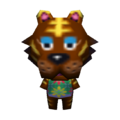
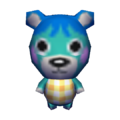


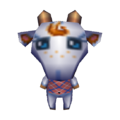
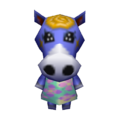
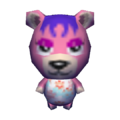
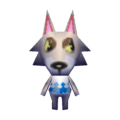
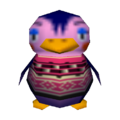
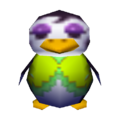
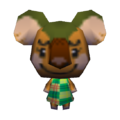
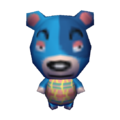
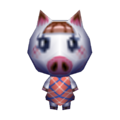
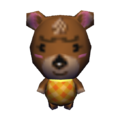
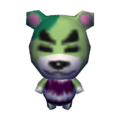
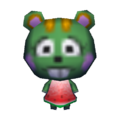
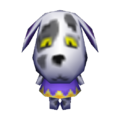

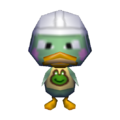

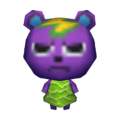
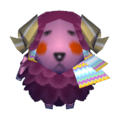
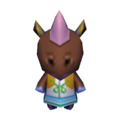
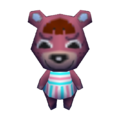
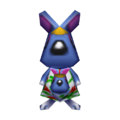
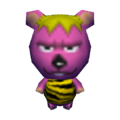

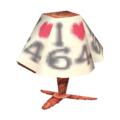

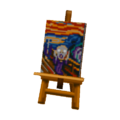
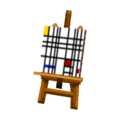
























0 Response to "Game That Has Big Eyes With Blue Eyelids for the Icons"
Post a Comment